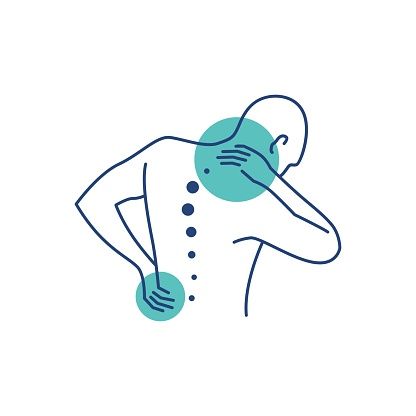
Muscle pain is a common issue that affects people of all ages. Whether caused by an injury, strain, or medical condition, acute muscle pain can be debilitating. Fortunately, muscle relaxants provide an effective solution for relieving discomfort and improving mobility. This article explores the top muscle relaxants for acute pain, their mechanisms, benefits, and potential side effects.
Understanding Muscle Relaxants
Muscle relaxants are medications designed to reduce muscle spasms, stiffness, and pain. They work by targeting the central nervous system or directly affecting the muscles. These drugs are commonly prescribed for acute conditions like muscle strains, tension headaches, and post-surgical recovery.
Medical Treatment
Prescription Medication
Some prescription medications are designed to support musculoskeletal health by addressing pain and discomfort associated with muscle conditions. Healthcare providers prescribe these medications based on individual needs and medical history.
One example is Pain O Soma 500mg, which is commonly used to manage acute muscle pain and discomfort. It works as a muscle relaxant, helping to relieve pain by blocking pain signals between the nerves and the brain. Recommended for individuals experiencing muscle spasms, injuries, or musculoskeletal disorders, Pain O Soma 500mg promotes relief and improved mobility, allowing users to regain comfort and enhance their daily activities.
There are two main types of muscle relaxants:
-
Centrally Acting Muscle Relaxants – These affect the brain and spinal cord to reduce muscle spasms.
-
Peripherally Acting Muscle Relaxants – These work directly on the muscles to relieve tension.
Top Muscle Relaxants for Acute Pain
1. Cyclobenzaprine (Flexeril)
Cyclobenzaprine is one of the most widely used muscle relaxants for acute pain. It helps relieve muscle spasms by acting on the central nervous system, providing short-term relief from musculoskeletal conditions.
Benefits:
-
Effective in reducing muscle tension
-
Helps improve sleep by easing nighttime muscle discomfort
-
Generally well-tolerated when used short-term
Side Effects:
-
Drowsiness
-
Dry mouth
-
Dizziness
2. Methocarbamol (Robaxin)
Methocarbamol is another effective muscle relaxant often prescribed for acute injuries. It works by depressing nerve signals in the spinal cord and brain.
Benefits:
-
Quick onset of action
-
Fewer sedative effects than other muscle relaxants
-
Can be used in combination with pain relievers
Side Effects:
-
Drowsiness
-
Upset stomach
-
Blurred vision
3. Carisoprodol (Soma)
Carisoprodol is a powerful muscle relaxant that provides rapid relief from acute musculoskeletal pain. It acts as a central nervous system depressant and is often prescribed for short-term use.
Benefits:
-
Rapid onset of pain relief
-
Suitable for acute injuries and muscle spasms
Side Effects:
-
Drowsiness and dizziness
-
Potential for dependency with long-term use
-
Nausea and headache
4. Baclofen
Baclofen is typically used for conditions involving severe muscle spasms, such as spinal cord injuries. However, it is also effective in treating acute musculoskeletal pain.
Benefits:
-
Reduces pain associated with muscle tightness
-
Effective for spinal injuries and severe spasms
Side Effects:
-
Weakness and fatigue
-
Nausea
-
Dizziness
5. Tizanidine (Zanaflex)
Tizanidine is a short-acting muscle relaxant often prescribed for acute muscle spasms. It works by blocking nerve impulses that cause muscle tightness.
Benefits:
-
Effective for treating muscle stiffness and spasms
-
Less sedating than other muscle relaxants
Side Effects:
-
Low blood pressure
-
Drowsiness
-
Dry mouth
6. Metaxalone (Skelaxin)
Metaxalone is a less sedating muscle relaxant that effectively treats acute muscle pain. It works by depressing central nervous system activity.
Benefits:
-
Fewer sedative effects compared to other relaxants
-
Suitable for acute injuries and sprains
Side Effects:
-
Nausea and vomiting
-
Headache
-
Drowsiness
7. Diazepam (Valium)
Though primarily an anti-anxiety medication, diazepam is also used as a muscle relaxant for acute pain. It enhances the effects of neurotransmitters to relax muscles and reduce pain.
Benefits:
-
Fast-acting relief for muscle spasms
-
Effective for acute injuries
Side Effects:
-
Drowsiness and fatigue
-
Risk of dependency
-
Memory impairment
How to Use Muscle Relaxants Safely
Muscle relaxants should be used under medical supervision to avoid potential risks. Here are some key safety tips:
-
Follow your doctor’s dosage instructions.
-
Avoid alcohol and other depressants while taking these medications.
-
Use muscle relaxants for short-term relief unless otherwise advised.
-
Be aware of potential side effects and report any adverse reactions to your doctor.
Alternative Therapies for Acute Muscle Pain
While muscle relaxants are effective, they are not the only option for treating acute pain. Consider these alternative approaches:
-
Physical Therapy – Strengthening and stretching exercises can improve muscle function.
-
Heat and Cold Therapy – Applying heat or ice can reduce inflammation and pain.
-
Massage Therapy – Helps relieve tension and improves circulation.
-
Over-the-Counter Pain Relievers – Medications like ibuprofen and acetaminophen can provide additional relief.
Conclusion
Muscle relaxants are a powerful tool for managing acute muscle pain. Medications such as cyclobenzaprine, methocarbamol, and tizanidine provide effective relief from muscle spasms and stiffness. However, they should be used responsibly to minimize side effects and avoid dependency. By combining medication with alternative treatments, individuals can achieve optimal pain relief and recovery.




Leave a Reply